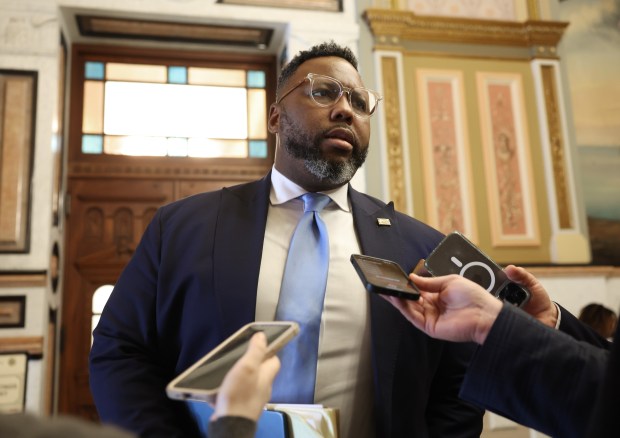For just the 11th time in 200 years, a majority of Illinois voters selected in a general election the candidate who ultimately would not become president.
Though Democratic candidate Kamala Harris picked up the state’s 19 Electoral College votes, former President Donald Trump amassed more than the 270 electoral votes needed to win the White House to become the 47th president of the United States. He could also become the first Republican in two decades to win the popular vote.
Illinois voters also selected Hillary Clinton — instead of Trump — in the 2016 election. As long has been the case for Democratic presidential candidates, Clinton piled up a large advantage in Chicago and suburban Cook County. The former secretary of state, senator and first lady was born in Chicago and grew up in northwest suburban Park Ridge.
Al Gore and John Kerry were overwhelmingly selected by Illinois voters in the 2000 and 2004 general elections, respectively, but Republican candidate George H.W. Bush was ultimately elected in both races.
Prior to Bush, Illinois voters selected the eventual president in every election since 1916 (when Illinois voters picked Charles Hughes instead of Woodrow Wilson).
Here’s a look back at the state’s popular and electoral votes going back to 1824, which was the first opposed race voted on in Illinois.
Note: Incumbent President James Monroe ran unopposed in 1820, which was the first presidential election after Illinois became a state. Whig Party candidates lost the popular vote in Illinois from 1836-1852. Theodore Roosevelt ran as a third-party candidate in 1912. Vote totals in Illinois for the 2024 general election are with 93% of precincts reporting.
Sources: Illinois State Board of Elections; Federal Election Commission; The American Presidency Project; Dave Leip’s Atlas of U.S. Elections
Subscribe to the free Vintage Chicago Tribune newsletter, join our Chicagoland history Facebook group and follow us on Instagram for more from Chicago’s past.




